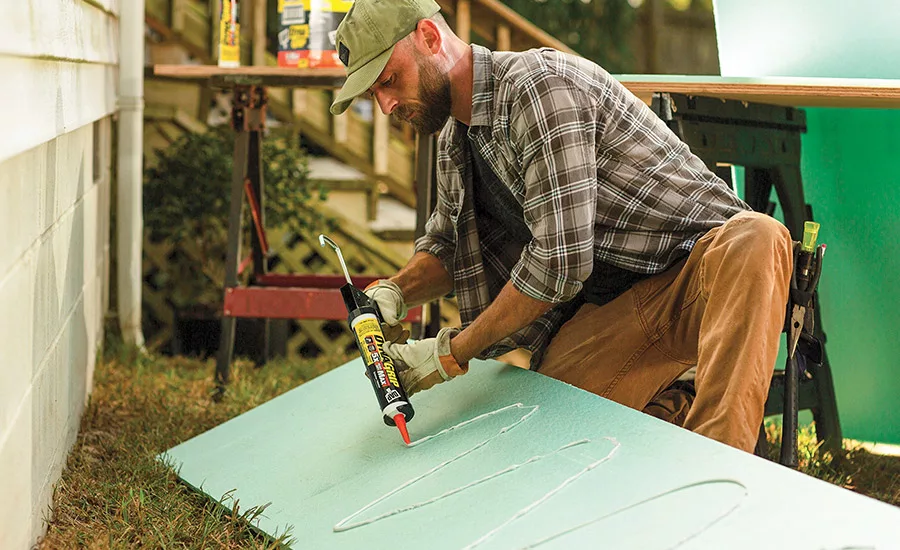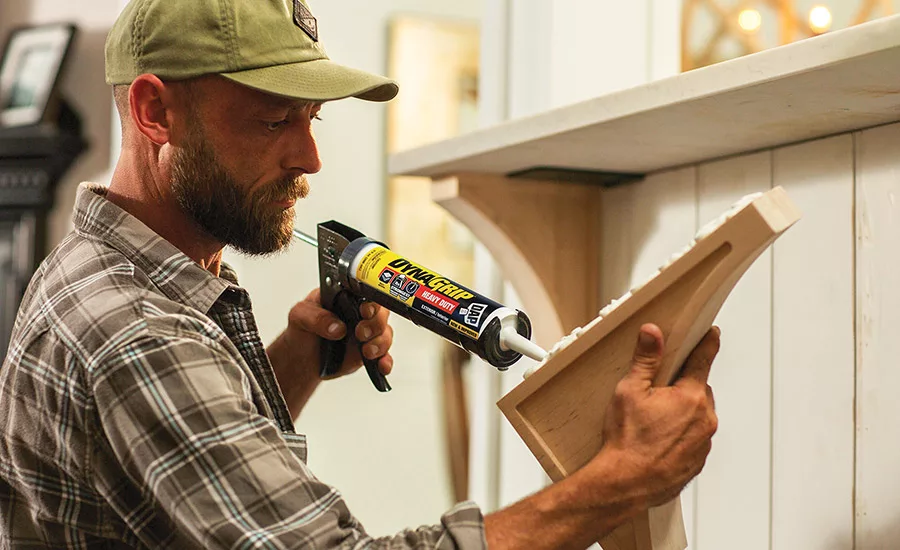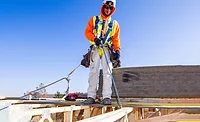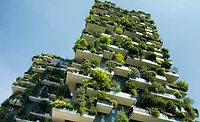Trends in Construction Sealants and Adhesives
Several sealant and adhesive trends are addressing the specific needs of construction and remodeling projects.


Demand for construction adhesives with better instant grab continues to grow as pros look for adhesives that can hold surfaces together instantly, especially for vertical applications.
Sealants and adhesives are important tools on the construction job site and for home projects. Though COVID-19 is causing challenges, particularly for large commercial builds, stay-at-home orders and other factors have actually led to increased demand in DIY and certain multi-family construction projects. As professional and DIY users look for better sealant and adhesive solutions for their remodeling and building projects, several new industry product trends are emerging in each category. These trends will become even more important once the economy restarts and pent-up demand in the construction industry can begin to be addressed.
Sealant Innovations
For sealants, one factor having an impact is the advancement in building substrates. Advanced sealants today must offer higher performance features like strong adhesion to all types of building materials, including composites (e.g., Azek, Trex, Kleer) and traditional substrates such as fiber cement, vinyl, aluminum, wood, and metal.
Time is money, and sealants that offer better productivity are key for professionals. To successfully tackle a project, it’s often smarter to invest in a higher quality sealant for better performance that will last. Popular product features that improve productivity on the job site include fast paint and rain-ready times to finish the job sooner, the ability to be applied in lower temperatures or on wet/damp surfaces, and easy gun-out for reduced user fatigue. Users also appreciate a sealant that is easy to clean up from surfaces with water for less mess and easier application.
Whether professional or DIY, users also are seeking long-lasting, durable sealants that can stand up to the wear and tear of the elements without breaking down. Advanced sealant technologies with higher performance characteristics include features such as the ability to repel water, dirt, and stains so the sealant is easier to clean, as well as UV and fade resistance so it stays looking fresh and new.
Another industry trend is an increased demand for sealants that can fill larger gaps (e.g., up to 3 in. wide) without cracking or losing adhesion. Sealants with higher flexibility and joint movement to withstand expansion and contraction without cracking or losing adhesion are ideal. Products also should provide all-weather and extreme temperature application so users aren’t restricted by weather conditions. The industry has also seen an increase in the development of sealants that use advanced technologies and formulas, such as hybrids, elastomeric urethanized and siliconized acrylics, and premium silicones.
Advancements in Adhesives
For construction adhesives, demand for products with better instant grab continues to grow as pros look for adhesives that can hold surfaces together instantly, especially for vertical applications like interior molding. Hybrid adhesive advancements deliver even faster bonds, which significantly reduces the amount of clamping and bracing needed on even the toughest and heaviest applications.
A powerful adhesive is a must-have for the most demanding pros who work on the toughest jobs, including the installation of subfloors, drywall, heavy remodeling, and new construction. In addition to stronger and more durable bonds, today’s building professional seeks products that are easy to gun for greater efficiency, as well as low-odor formulas that are compliant with stringent VOC regulations.
Key Marketing Considerations
When it comes to marketing and merchandising sealants and adhesives, several factors should be considered. Selling sealants along with the project is key. Sealants are an important part of any project, and it’s important to stress that not all sealants are the same. These products are produced in many different grades and classes.
Retailers should recommend sealants that are formulated specifically for the job at hand, whether it be the installation of windows or doors, or the painting of trim. Typically, the best product for the job is a higher grade formula. While these sealants may be more expensive, they will deliver better long-term results.
At retail, the industry has moved to a colored category approach on ship cases/secondary packaging in order to help guide sealant selection by project. Red represents kitchen and bath projects, blue is for window/door/siding, teal green is for paint and trim/all-purpose, and green is for specialty projects. Once the customer is in the right project category, they are able to compare similar products more easily and decide what’s more important to them, whether it be faster dry time for a paint project, interior or exterior window trim sealing, or a bathroom sealant that is mildew resistant. The clearer the category stand outs, the faster the consumer can make the right selection for their project.
When recommending adhesives, retailers should determine what application the user is trying to complete and what substrates they are trying to bond. Not all adhesives can bond all substrates; therefore, it is important to recommend the right adhesive based on the user’s need.
Research among professionals has found that the important factors that are considered when shopping for adhesives are bond strength, substrate compatibility, and instant grab. In a similar fashion, some manufacturers have made selecting appropriate products within the construction adhesives category easier to navigate by labeling the appropriate applications directly on the packaging.
The biggest pitfall in the construction adhesives category is that some pros reach for the least-expensive product because they are also using mechanical fasteners. In many cases, however, it is the adhesive that prevents failures rather than the fasteners.
For example, floor squeaks and nail pops are two common failures that homeowners often experience. The cause for these issues can many times be attributed to either not enough adhesive used or the use of a lower cost product with subpar bond strength. When it comes to the use of adhesives and sealants in the construction industry, product knowledge and selection can go a long way in ensuring a project is completed quickly and correctly for a long-lasting result.
For more information, visit www.dap.com.
Looking for a reprint of this article?
From high-res PDFs to custom plaques, order your copy today!









